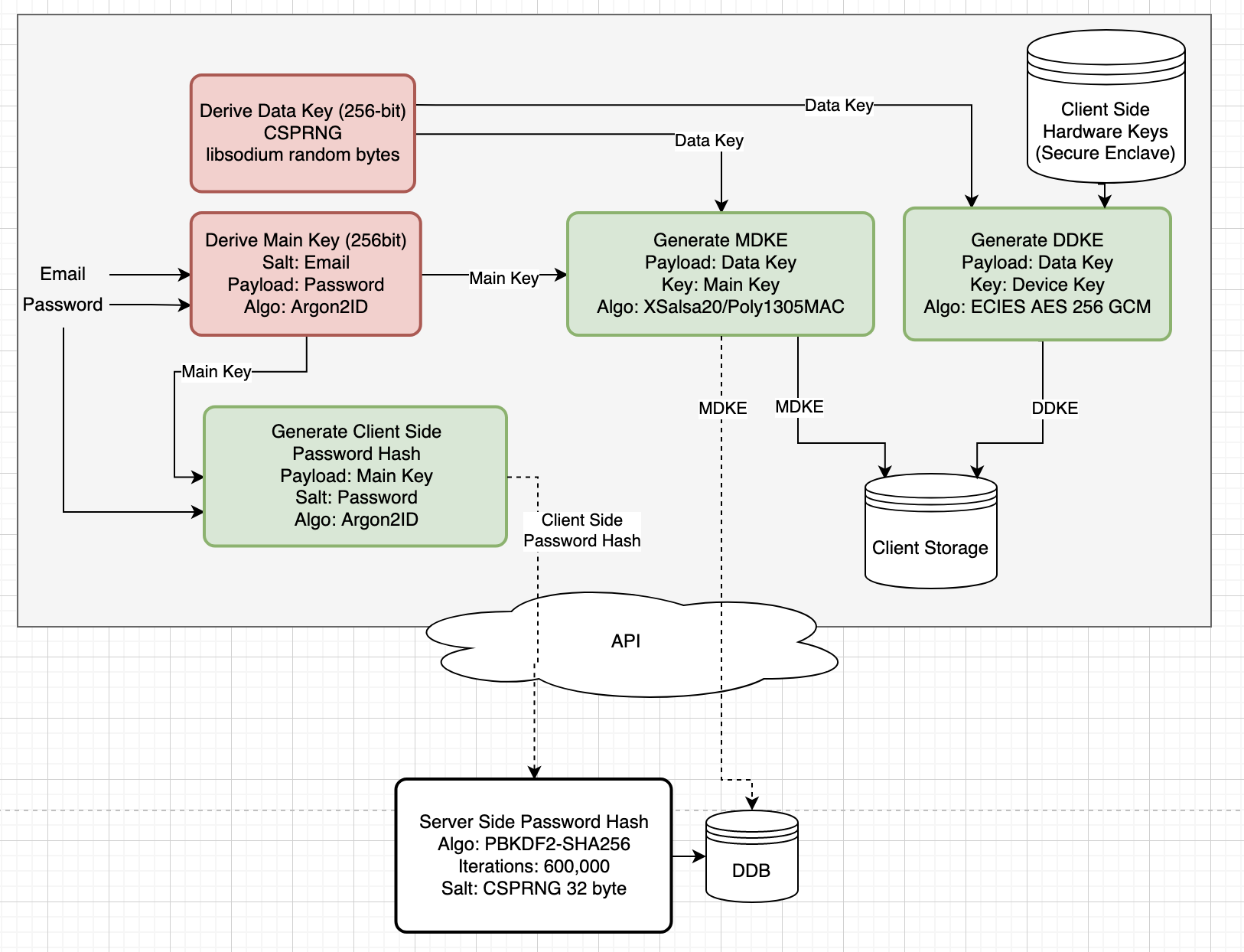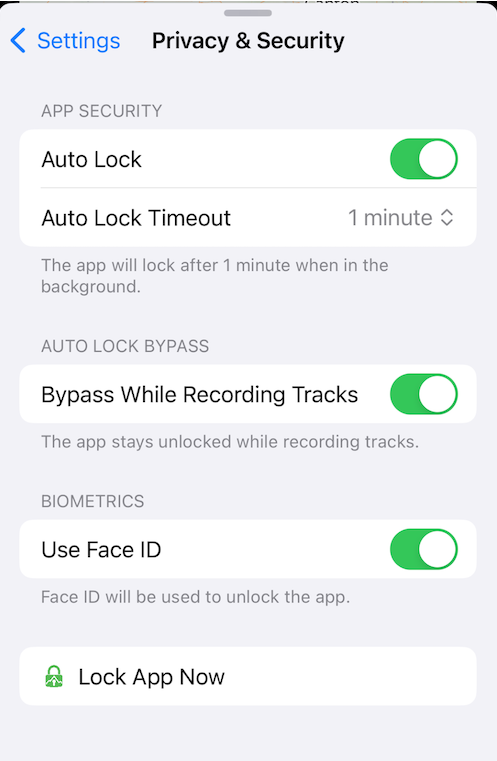We have very high standards for data privacy.
To ensure that your data is always protected we follow industry best practices:
- We do not roll our own encryption, but instead use open source software and encryption libraries that are vetted:
- libsodium
- Argon2ID
- We E2EE all user data where possible, except for minimal metadata like timestamps and delete markers.
- We ensure our local machines, cloud environments, and other software we use to distribute the platform are protected by hardware security keys.
What is E2EE?
Encryption Overview:

| Item | Purpose |
|---|---|
| Data Key | Used to encrypt user data (pins, routes, notes, pictures, etc.). 256-bit encryption key derived from a CSPRNG. Never leaves client side device. In memory key only & never persisted to disk unless Auto Lock is disabled |
| Main Key | Used to encrypt the data key. 256-bit encryption key derived from email & password. In memory key only; never persisted to disk; never leaves client side. |
| Main Data Key Envelope | Encryption envelope around the data key encrypted by the main key. Persisted client and server side. Used for password login. |
| Device Data Key Envelope | Encryption envelope around the data key encrypted by hardware backed storage keys (Secure Enclave / iOS Keychain). Persisted client side only. Used for biometric login. |
| Client Side Password Hash | Argon2ID hash of the user’s main key performed client side before being transmitted over the network. Used for online login. |
| Server Side Password hash | PBKDF2 (600,000 rounds) hash of the client side password hash, performed server side. Used for online login. |
| Password & Hashing | The user’s plaintext password never leaves the user’s local device. The password is hashed twice; once client-side and once server-side. The client-side hash ensures the user’s password is never transmitted off of their local device. The server-side hash ensures that even with a server-side data breach the hash can’t be used to authenticate since the attacker won’t know the client-side hash. Also, the client-side hash and server-side hashing algorithms are different; client-side hash is performed by Argon2ID and server-side the hash is performed by PBKDF2 600,000 rounds. |
Auto Lock:
Auto Lock further protects your map data by only keeping a reference of your Data Key in-memory and locking the app after a specified amount of time.
- Auto Lock On:
- The Data Key is protected by the iOS Secure Enclave hardware module and biometrics.
- The app will lock after the time set or if the app is killed in the background.
- Auto Lock Off:
- The Data Key is protected by the iOS Keychain and stored with
kSecAttrAccessibleWhenPasscodeSetThisDeviceOnly. - The app will never lock, even if the app is terminated in the background.
- The Data Key is protected by the iOS Keychain and stored with
- Auto Lock Timeout: The time when the app will automatically lock in the background.
A screenshot of the Auto Lock settings on iOS:

Release Notes:
- v1.1.0 - Jun 22, 2024: Added information regarding App Lock.
- v1.0.0 - Oct 8, 2023: Initial E2EE design